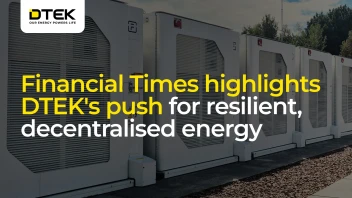To achieve energy sector reform and decarbonization, Ukraine should cultivate its renewable resources, adopt best international practices, and deploy advanced technologies.
Today’s announcement of the “Fit for 55” package by the EU Commission includes proposed actions and amendments on EU laws and regulatory acts to fulfill European commitments on decarbonization through 2030. The need to transform the Ukrainian energy sector becomes even more urgent as DTEK’s Chief Technology Officer Philipp Leckebusch detailed further at the 12th Ukrainian Energy Forum, “Ukraine has three fundamental assets which, if bolstered by sound policies, will transform our slow evolution into a successful revolution.
“First, Ukraine boasts a huge reserves of renewable resources – wind, solar, and bioenergy – as well as vast territories not even being used for agriculture.
“Second, Ukraine can learn from similar economies more advanced in energy transition, and quickly adopt the solutions and technologies with demonstrated effectiveness.
“Third, Ukraine can use and improve the most recent advances and cost reduction techs for producing and storing clean energy – which already are the most competitive solution for energy generation in most regions of the world.”
DTEK’s CTO emphasized, “The challenge now is to take advantage of these benefits and to gain access to affordable capital and finance. It is also important for Ukraine to attract direct investments from foreign investors. This is a critical element to enable the efficient transformation of the energy sector of Ukraine.”
He stressed that the completion of long-awaited energy market reforms and sound economic policies are fundamental requirements for the access to these financial resources. “And in this matter a great responsibility and work lies with the state.”
According to Leckebusch, through partnerships, Ukraine can turn its assets into domestic economic value added and to profit from the experience of foreign companies and markets. He recalled that DTEK, together with international partners, successfully uses the latest technologies in its projects, including,
“The 6 MW EnVentus onshore wind turbines from Vestas, which are the latest development and the largest onshore wind turbine in its class, as well as a battery energy storage system from Honeywell and technology for exploring and producing gas from wells more than 6 km deep.”







